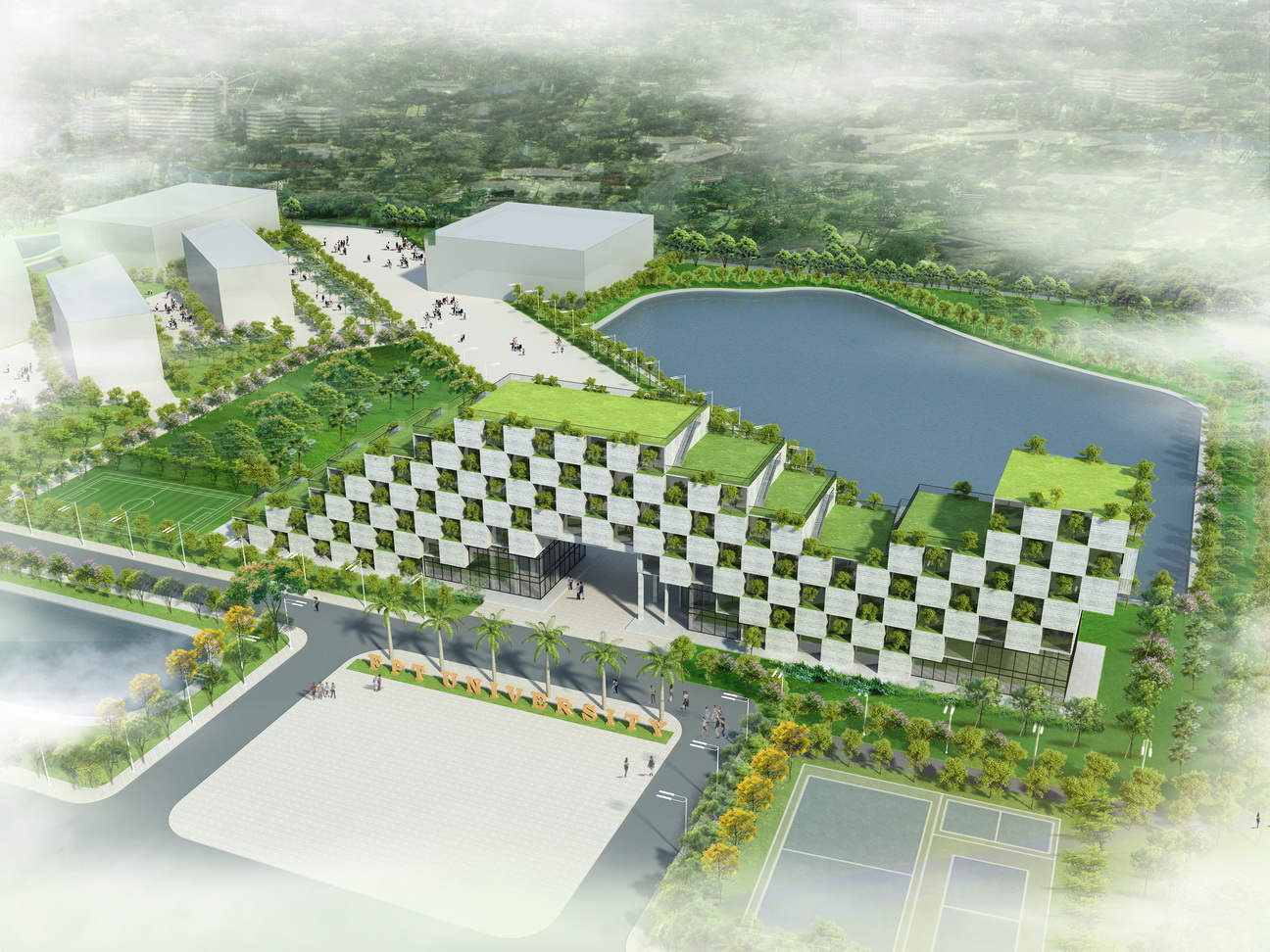A Vietnamese university building design has won the "Education" category at the 2014 World Architecture Festival (WAF), according the festival’s website.
The FPT Technology Building, part of the first stage of a larger master plan to convert Hanoi-based FPT University into a globally-competitive and environmentally-conscious higher education institution, was named the winner of the category at the fest, which ran from October 1 to 3 in Singapore, the website said.
The project, which is under construction at Hoa Lac High-Tech Park, 34km from the Vietnamese capital city, beat seven rivals from other countries to win the category.
It was designed by Vo Trong Nghia Architects, an award-winning Vietnamese company.
“FPT University building is situated in an area of Vietnam that experiences frequent energy shortages. Passive design is employed to reduce the building's dependence on active systems so that during blackouts the building is able to function on minimal generated backup power,” the WAF website said.
“A shallow plan allows copious natural light into the building, reducing the need for artificial lighting. The trees within each window opening operate as a green skin to reduce direct heat transfer through the windows. The building is orientated to the prevailing breezes and employs cross ventilation for cooling. The green skin of trees and an adjacent lake helps reduce the air temperature.”
Vo Trong Nghia Architects’ “The Cam An Communal House” in Hoi An Ancient Town in central Vietnam was also on the shortlist for the category, but did not make it to the award.
Besides the FPT Technology Building, Vo Trong Nghia Architects also had two other works lauded at the festival, including the “Son La Restaurant” in the northern Vietnamese province of Son La, which won the “Hotel and Leisure” category; and the “House for Trees” in Ho Chi Minh City, which topped the “House” category.
In June, the “House for Trees” was honored at the 5th AR House Awards 2014 in London, as it was considered the best work to help deal with urban pollution.
“The Chapel,” created by Vietnamese architect Nguyen Hoa Hiep, also won big at the festival when it received top prize in the “Civic and Community” category, and was hailed as the “Building of the Year” of the 2014 WAF.
Also, the future project “Return – The Storage of Natural Life,” designed by students from the Ho Chi Minh University of Architecture, won this year’s WAF Students Competition.
The World Architecture Festival is one of the world’s largest festivals and live awards competition dedicated to celebrating and sharing architectural excellence from across the globe.
This year it took place at Marina Bay Sands Hotel, attracting around 2,000 architects, designers, clients, and the press.
Like us on Facebook or follow us on Twitter to get the latest news about Vietnam!



















































